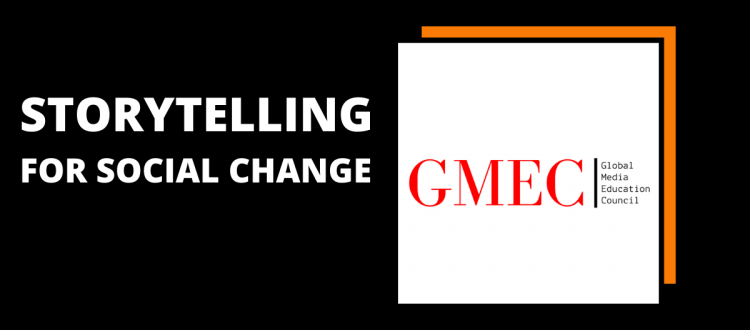Storytelling for Social Change – Dr. Manisha Pathak-Shelat
Stories had always been important in India, a culture with strong oral traditions. Even concepts such as Sadharanikaran, Sahradaya, and Rasa in the Indian communication theory highlight the significant contribution of storytelling in capturing audience engagement.
Storytelling had lost some of its significance in the times when we started privileging the masculine, the rational, quantitative paradigms and technology. I am glad it is regaining our attention as we recognize the importance of emotions and theories of affect gain prominence even in academic circles.
We all remember stories that had moved us, inspired us, made us laugh or cry but stories for social change are different from ordinary stories. Social change stories also emotionally connect with us but additionally, they have to have a purpose. It is not sufficient for them to entertain us.
Another important point to note is that not all stories bring social change. Remember, stories are also told to maintain the hegemonic culture, the status quo and remind people to observe the existing social norms. In fact, many stories just do that.
I would like you to see a video here- A touch of care- and relate it to the points I will make later. These points are drawn from my ongoing work with Prof. Christine Garlough of the University of Wisconsin-Madison on Ethic of Care.
What does this story do? What can stories do?
- Bear Witness: Stories can bear witness to important events where the audience did not have a chance to be- riots, rape, triumph, solidarity. Stories are mirrors that reflect our society. The video we saw bears witness to a young girl’s life from destitution to success and a mother’s love that fights against all odds. Similarly, stories about Chipko Andolan take us there and bear witness to the struggles and triumphs of the women activists.
- Acknowledgement and recognition: Stories offer acknowledgement and recognition to the marginalized. In its simplest terms, acknowledgement is being there to answer, “Here I am!” when one hears a call for help. It is the self’s obligation “to be for others” (Hyde, 2006). Without acknowledgement one is confronted with the possibility of being “isolated, marginalized, ignored, and forgotten by others” (p.1). Hyde evokes the concept of “social death” which is a consequence of life without acknowledgement. Whether it is coal miners or manual scavengers or single
mothers…such groups are seldom on our radars but their stories make us acknowledge their existence and recognize their issues as valid. - Question, critique, challenge: Social change requires challenging the status quo and existing power structures- Governments, corporates, policies and systems, practices and norms all need to be challenged to take on issues of discrimination based on gender, class, caste and other identity axes. At times when it is not safe or effective to pose a direct challenge stories can act as powerful tools through metaphors and allegories. The video we just saw raises many questions- Why is the mother in the video no rights? Why is she not treated with dignity?
- Envisoning alternatives- My personal favorite (Remember Bhavni bhavai with two endings?). Stories can show us that another reality is possible, another ending is possible, there are better ways to resolve issues and we can treat others with more empathy. Stories can create a vision for future and well-told stories can lead us to believe in this vision.
So, we discussed how stories can contribute to social change. Now I would like to raise some questions about the power of stories. I have three questions that all storytellers who are envisioning social change should ponder.
- Is being a mirror enough
- Is cultural activism enough
- Are you speaking FOR people and silencing those less powerful by telling other people’s stories?
And finally, I would like to draw our attention to what we can learn from brand stories. We love certain brands and their stories. They stay with us for a long time and we are not bored even when we encounter them again and again. What are some elements that brand stories work on to achieve this impact?
- Pace
- Brevity
- Characters
- Audience-centricity
- Focusing on only one message

